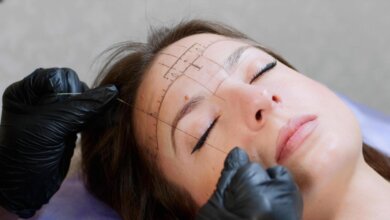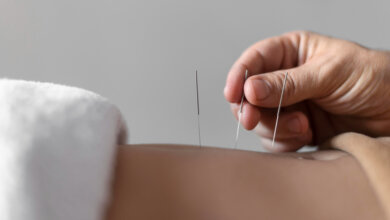Monsoon Skincare and Haircare Tips Backed by Experts: Your Ultimate Guide to Healthy Skin & Hair This Rainy Season
The monsoon season is a much-needed break from the scorching heat of summer. The cool breeze, earthy aroma of fresh rain, and lush greenery bring a sense of calm and rejuvenation. However, along with this seasonal charm comes a unique set of skincare and haircare challenges. The high humidity, damp weather, and sudden temperature fluctuations can wreak havoc on your skin and hair if you’re not properly prepared.
From unexpected acne breakouts and clogged pores to frizzy hair and fungal infections, monsoon woes can affect everyone—regardless of skin or hair type. But don’t worry, because with a few smart, dermatologist-approved tips, you can stay glowing and confident all season long.
Let’s dive deep into the most effective, expert-backed skincare and haircare tips that you can trust this monsoon.
🌧️ Why Monsoon Affects Your Skin and Hair
The monsoon air carries excess moisture that alters the way your skin and scalp behave. Here’s what happens:
-
Increased Humidity: Makes skin oily and hair frizzy.
-
Sweating and Pollution: Leads to clogged pores and acne.
-
Rainwater Exposure: Often dirty or acidic, which may irritate the scalp and skin.
-
Fungal Growth: Damp skin and hair become breeding grounds for fungal infections, especially in skin folds, feet, and scalp.
Understanding these causes is the first step to preparing a proactive skincare and haircare regime.
💧 Expert-Approved Skincare Tips for the Monsoon
1. Cleanse Smartly and Gently
According to leading dermatologists quoted in the Times of India, washing your face twice a day is crucial in monsoon. Use a mild, sulfate-free cleanser that removes sweat, oil, and grime without stripping the skin’s natural moisture.
2. Switch to Lightweight Moisturizers
Even if your skin feels oily, it still needs hydration. Opt for lightweight, water-based or gel-based moisturizers enriched with ingredients like hyaluronic acid, aloe vera, or niacinamide. They hydrate without clogging pores.
3. Use a Toner for Oil Control
Increased sebum production during monsoon leads to greasy skin. Incorporate an alcohol-free toner with witch hazel or green tea extract. It tightens pores, reduces shine, and balances the skin’s pH.
4. Don’t Skip Sunscreen
Cloudy skies don’t block UV rays. Use a broad-spectrum sunscreen with at least SPF 30, even on overcast days. Gel-based sunscreens are ideal for humid weather.
5. Exfoliate—But Not Too Much
Gentle exfoliation 1–2 times a week helps remove dead skin cells and prevent clogged pores. Avoid harsh scrubs; go for AHAs/BHAs or enzyme-based exfoliants.
6. Watch for Fungal Infections
Fungal infections around the feet, underarms, and groin are common in monsoon. Use antifungal powders or creams if you’re prone to them, and keep these areas clean and dry.
7. Hydrate From Within
Drink plenty of water and consume fruits rich in antioxidants, like berries, oranges, and papaya. This helps maintain skin elasticity and glow from the inside out.
🌿 Haircare Tips to Tame the Frizz and Fight Fungal Woes
1. Keep Your Scalp Clean
Humidity can cause sweat and dirt buildup on your scalp, leading to dandruff and infections. Wash your hair 2–3 times a week with a mild, sulfate-free shampoo that suits your scalp type.
2. Condition Religiously
Always use a lightweight conditioner focusing on mid-lengths and ends. Avoid the scalp area to prevent greasiness.
3. Go for Natural Oils—but Use Them Wisely
Coconut, argan, and tea tree oils have anti-fungal and nourishing properties. Apply lightly before washing, not overnight, as leaving oil too long in humid weather can clog follicles.
4. Dry Your Hair Thoroughly
Never tie up wet hair. It creates a moist environment ideal for fungal growth. Pat dry with a microfiber towel and let hair air dry in a cool, dry place.
5. Avoid Heat Styling
The hair is already vulnerable in damp weather. Heat styling tools further strip moisture and damage hair strands. Embrace your natural texture instead.
6. Opt for a Hair Spa or Scalp Treatment
A hydrating hair spa once a month or an anti-fungal scalp treatment can help restore the health of your hair and scalp during this season.
🧴 Products to Look For
To make it easier, here’s a quick checklist of what you should include in your monsoon skincare and haircare routine:
For Skin:
-
Sulfate-free face wash
-
Lightweight gel moisturizer
-
Alcohol-free toner
-
SPF 30+ gel-based sunscreen
-
AHA/BHA exfoliant (once a week)
-
Anti-fungal powder (for body folds)
For Hair:
-
Mild shampoo (sulfate & paraben free)
-
Lightweight conditioner
-
Leave-in serum or anti-frizz cream
-
Tea tree oil (for itchy or flaky scalp)
🚫 What to Avoid During Monsoon
-
Heavy creams or oily moisturizers
-
Comedogenic makeup products
-
Tight synthetic clothing (traps moisture)
-
Over-washing hair or skin
-
Leaving skin or scalp damp
-
Dirty makeup brushes and pillow covers
✅ Pro Tips for an All-Round Healthy Routine
-
Change pillow covers and towels often to avoid bacteria build-up.
-
Use blotting paper to control excess oil during the day.
-
Avoid eating too much oily or spicy food, which can trigger acne.
-
Sleep well and manage stress, as both impact skin and hair health.
-
Choose breathable fabrics like cotton and linen for daily wear.
🌈 Final Word
The monsoon may be messy, but it doesn’t have to mean bad skin and hair days. With the right care, your skin can stay clear and glowing, and your hair soft and manageable—even during this unpredictable weather. The key lies in choosing products that match the needs of this season, following hygiene practices, and being gentle with yourself.
As trusted by dermatologists and beauty experts, consistency is more important than perfection. Follow these expert-backed skincare and haircare tips throughout the rainy season, and you’ll not only tackle the humidity like a pro—you’ll radiate confidence from within.




